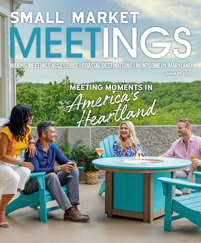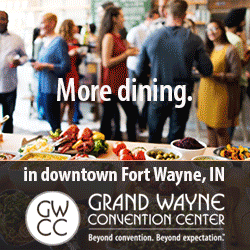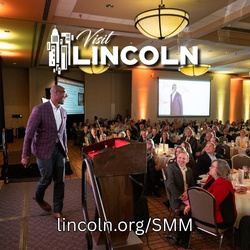Attendees have to eat, but they might thank you for one less meal in a convention hall. So why not let them loose to enjoy a dine-around?
This can be beneficial for the local economy, bring excitement to any program and save meal costs, all while introducing attendees to the local culture. But poorly planned dine-arounds can lead to frustrated attendees and frazzled restaurateurs. How many restaurants should a planner pick, and how should they make their selection? How do they navigate dine-arounds for attendees with dietary restrictions? And how can they transform the typical dine-around into an unforgettable evening for their attendees?
Here, three industry experts share their recipes for dine-around success.
Design Them Intentionally
When designing a dine-around, planners shouldn’t treat it like an afterthought or merely a strategy to avoid providing another meal for attendees. Instead, they should give a dine-around as much attention as any other component of their event.
“It’s basically a mini event, so everything you do for an event really goes into it,” said Susie Townsend, chief destination experience officer at Visit Indy. “There’s the timing, the payment, the conversation. I think all those elements are important.”
That means examining your goals for a dine-around. Why would a dine-around be better than a banquet? Is it to simply give attendees a night on their own? Is the plan to let them explore the city, experience local culture or engage in meaningful networking with one another?
If meaningful conversation is a goal for the evening, the chosen restaurants should have private dining spaces available so attendees can hear one another while they eat. If getting attendees to enjoy a destination’s great local nightlife is the goal, planners can arrange to include lively pubs or restaurants that double as entertainment venues.
They should also be intentional about their attendees’ preferences. It’s a good idea to offer variety in a dine-around and cater to several tastes and dietary restrictions when considering the restaurants. Planners should know their attendees’ dietary restrictions and ensure every restaurant can accommodate common ones (for example, nut allergies or gluten-free dishes).
But the selection of restaurants should also accommodate a variety of budgets if the attendees are paying their own way. Planners should absolutely showcase fine dining or higher-end options for those who want to splurge, but they should be mindful to include a few casual options for the more frugal attendee.
“We kind of determine the dynamic of the group, and we go based off budget, if that’s disclosed,” said Nicole Rivadeneira, business development manager at Ethos Event Collective, a DMC and event management company. “Sometimes it’s not disclosed so we have to use our own discretion. Typically, we do it in a tiered format where we have low-priced options for dine-arounds and then medium-priced and top-tier restaurants.”
To design these as intentionally as possible, planners should rely on the services of destination experts, including DMOs and DMCs. They can recommend and coordinate with restaurants and even help with signage and wayfinding for attendees. DMCs can help manage more complicated dine-arounds, such as those that involve transportation. They can also connect planners with third-party vendors to assist with entertainment or décor needs to bring the dine-arounds to the next level.
“As a DMO, we take all the information and help them with the options and send them referrals,” said Allie Asuncion, senior director of site and client experience at San Diego Tourism Authority. “It’s our role to give them options and connect them with the best entities who will handle everything they need.”
Remember Logistics
The logistics of a dine-around can get complicated very quickly, especially if the event has many attendees.
First, planners should consider how many restaurants they will need based on the number of people attending.
“I would say communication is important so that the restaurant knows what to expect when we walk in,” Townsend said. “And how many people are coming in, how they’re paying the bill and if any gratuity is included.”
Planners can coordinate with local restaurants to ensure each one wants to participate in the dine-around. CVBs can bridge any gaps here and connect planners to chefs and restaurant managers. Planners can then work with the restaurants to design fixed menus, which are a must to make it manageable for each restaurant to serve their usual crowd while also catering to attendees.
“Typically, what we find works best is a pre-selected menu, especially in larger group dynamics,” Rivadeneira said. “It takes a lot of stress off the kitchen.”
When it comes to attendee sign-ups, whether they’re printed or digital, planners should present the menus and have a limited number of slots for each so that restaurants — and city streets — aren’t overwhelmed.
“From an operations side, look at the full footprint to ensure you have enough space for the guests you have so the flow works well,” Asuncion said. “You don’t want one space being super popular while others are empty.”
Provide clear directions, such as a map for walkable locations; if the event has an app, include information for each restaurant in that. Signage or even CVB representatives can also help attendees find where they’re going.
Transportation is another factor to consider. The easiest way to design a dine-around is to select restaurants that are all in one area and are close to the hotel or convention center that attendees are coming from. Walkable dine-arounds save planners the hassle of coordinating shuttles and making sure no attendees are left behind. But if there’s a popular dining destination outside a walkable range, a DMC may be a worthwhile investment for managing transportation.
Make Them Memorable
While traditional dine-arounds can be great, there’s plenty of room for planners to elevate them and make them stand out in attendees’ minds. Adding a twist or an element of fun to the traditional dine-around can be just what they need to bring the event to the next level.
One way to make dine-arounds memorable is to incorporate a destination’s culture throughout. When selecting the restaurant options, ensure that local cuisine is represented, from the destination’s signature foods to any ethnic or cultural staples it’s known for. Avoid chain restaurants. If the restaurants incorporate something the area is famous for, such as the beach, that’s even better.
“Things that I’ve seen work in the past are theme-driven or narrative experiences, like a culinary journey or experience in a restaurant,” Rivadeneira said. “We’ve also seen some farm-to-table things, chef-led courses or workshops. And if this is a group that’s more driven towards alcohol, we may do a bourbon tasting or have a wine sommelier.”
Another factor that can elevate the dine-around is entertainment. Many restaurants, especially outdoors, have venues for live entertainment. Hiring local bands, comedians or other performers is a great way to liven up a standard dinner and let attendees enjoy the area.
Adding a twist on traditional dine-around concepts can be key to making it more exciting. One such trend is that of a block party, which has been the default dine-around-like experience for meetings in San Diego for some time.
Block parties can also be done in smaller destinations, particularly if all the restaurants are within a set neighborhood or district. Blocking off a street is a great way to let attendees experience the city in a fun way. Décor, entertainment and even stations to try food and drinks outside of the restaurants can further enhance the experience. DMOs and DMCs can assist planners in securing the proper permits.
“It depends on what their goal is and what their theme is,” Asuncion said. “We can choose certain menus to represent culture, but then we take it a step further and make sure the entertainment matches that same vibe with décor and lounge furniture. Some even put a Ferris wheel or stage in the middle of the street.”
Still another option is to incorporate food trucks, which have been trending up in popularity. Because they’re mobile, food trucks can often work great in outdoor spaces such as parks or large outdoor venues.












